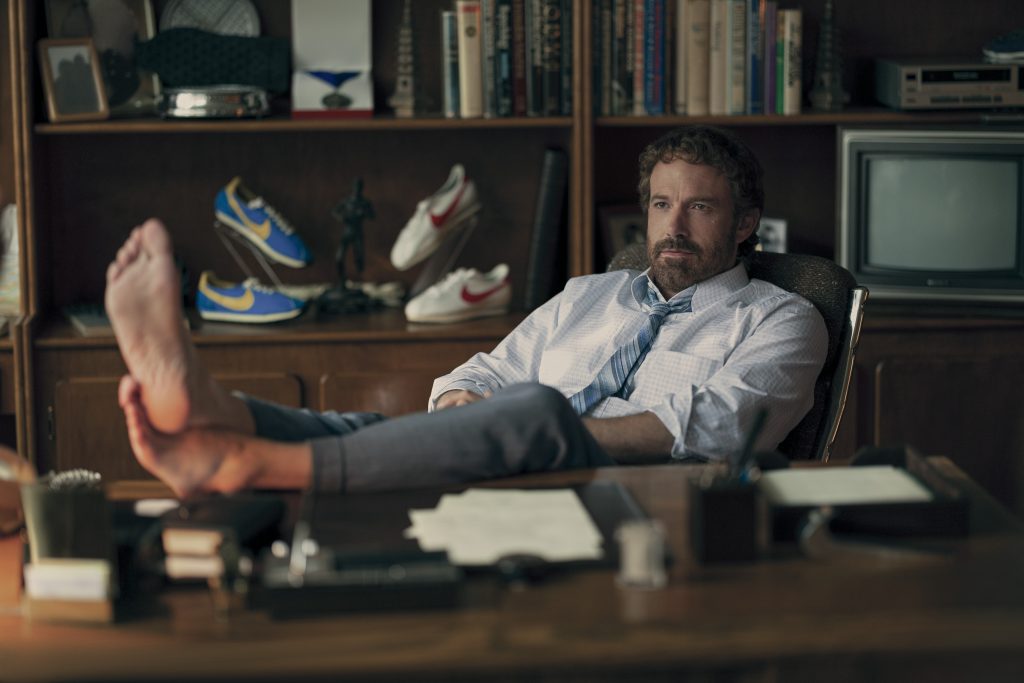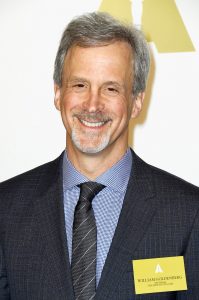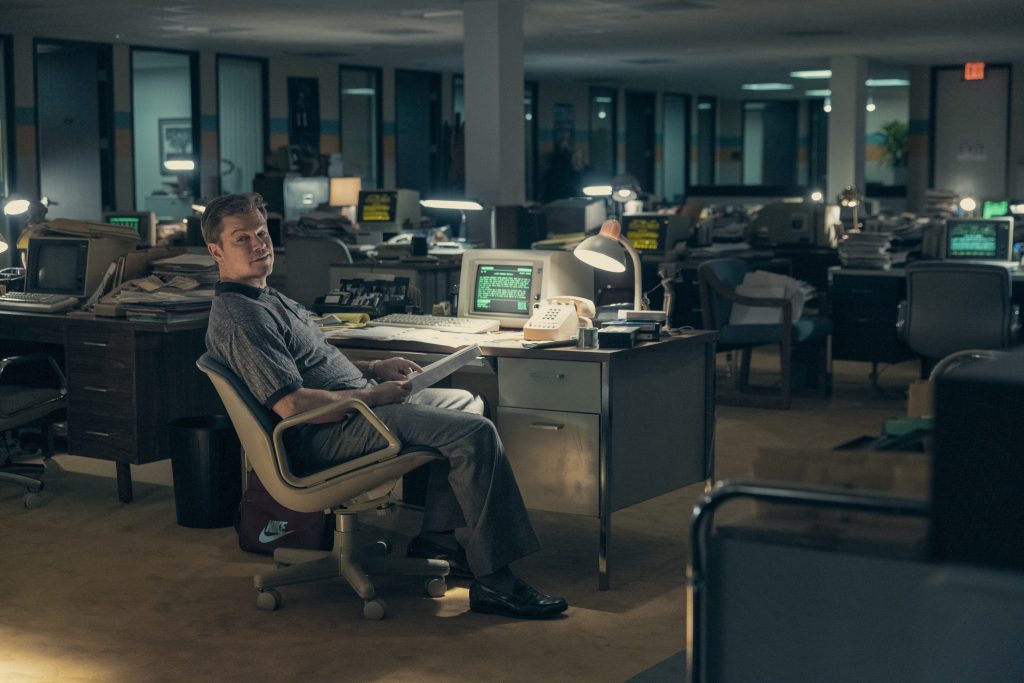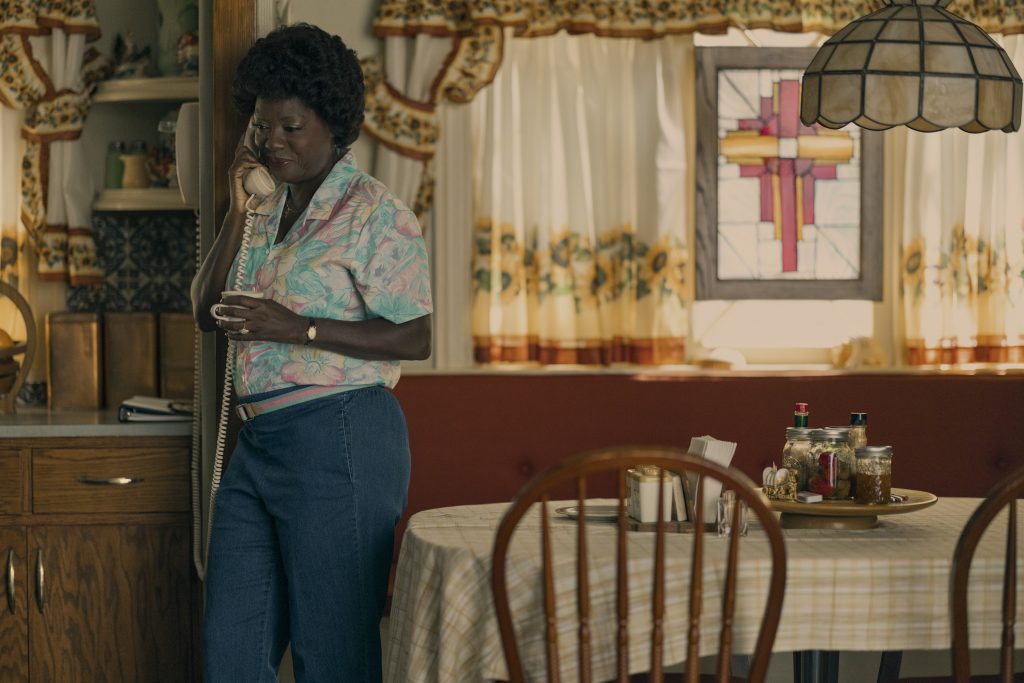
Oscar-winning editor William Goldenberg has worked with Ben Affleck in the past so it was a no-brainer that he would say yes to working on Air. Now, they have a fantastic shorthand. Both of them have Avid to the point where the filmmaker will look at dailies and place film in the bin.
But mostly, Goldenberg is left alone to do his thing even as Affleck sends feedback along the way.
By filming at an office building, it allowed everyone to be working at the same place. It also meant that Affleck would be looking at footage first thing in the morning or both Affleck and Matt Damon would work out a resolution to a scene needing a transition. None of this would have been possible if they were filming across multiple locations.
Goldnberg also talks to Below the Line about the challenges that came with putting the boardroom scene together.

Below the Line: Having worked with Ben Affleck a few times before, how quickly did you say yes to working on Air?
Goldenberg: As long as it took me to say yes. Ben is one of those filmmakers—there’s a few filmmakers I’m lucky enough to work with that whatever they make out work on because I know their sensibilities are the same as mine, are similar to mine, I know they’re going to be work on material that I am drawn to as well. Plus, Ben’s a friend and we’ve been known each other for 17 years at this point, so I would pretty much do anything he wanted to wanted to make.
BTL: How has the shorthand improved in your relationship over the years?
Goldenberg: Oh, actually every film, it gets a little shorter, I guess. Gone Baby Gone, the first thing we did together, he spent a lot of time sitting next to me at the Avid, going through the thing shot by shot. Now, it’s become more like we have this real shorthand and, he also has an Avid at home that he’ll look at dailies and pull out pieces he likes of film and put them in a bin in my Avid will talk to his Avid. It’s very much like, “Here, this is stuff I found, just try it.”
It’s all very, like you say, shorthand and we trust each other implicitly. He leaves me alone to do my thing. He’ll give me feedback, just general feelings about things, not anything specific, and I know what he means just based on our relationship. It goes really fast that way now, as opposed to when we were first getting to know each other, things took a little longer, it took time to develop the trust and feelings we have about things that are now so in sync that it’s a lot of looking and nodding and less talking.
BTL: Is Avid your preferred software system?
Goldenberg: It is right now, yeah. I’ve used it for years and so many years, I can’t remember how long. But if we are ultimately switched to Premiere or to DaVinci Resolve or something like that, it’s a tool so I’ll learn how to use that in a couple of weeks and then it’ll be second nature.
I’m used to the Avid. I can operate it without looking at it. I feel it’s an extension of my hands at this point, because it’s been so many films that it doesn’t get in the way of my thought process. I am able to do it instinctually and I don’t have to think about that. I can keep my head in the film so it’s really valuable that way.
BTL: How long after photography wrapped did you have a rough assembly cut ready to show to Ben?
Goldenberg: I believe I would say probably either the next day or the day after. We started shooting the film on June 2 and we shot it in, I think, 23 days. I say we, they. We had a friends and family screening on August 2. In basically eight weeks after the start of principal photography, we were already showing it to people. I had to keep up with camera because they were shooting so fast. What I was doing was so informative of what they were going to shoot.
I mean, there were times where I’d cut stuff together, Ben would see it, and Matt was very involved in the editing room during the production phase. They’d come in and go, “Well, we need a transition for this, this doesn’t cut from here to here, we’ll have to shoot a transition.” The three of us would sit around late at night and think of ideas and sometimes during the shooting day, think of ideas, somebody will come up with an idea, usually one of them.
Literally a couple of times, “Okay, great, we’ll go shoot that, we’ll be right back.” They would go literally run down the hall to the set and shoot it. Ben refers to it as star cam. To me, it was like a college dorm because everybody was in the same place and it was the first time that’s ever happened and I wish it would happen more.

BTL: Was there a scene or sequence in the film that provided the biggest challenge?
Goldenberg: Yes, the boardroom scene when the Jordans come to visit Nike. I knew from reading the script that was going to be the most challenging scene. I said to my assistant, “We’ll be working on this right up until the very end.” First of all, it’s one of the biggest scenes, if not the biggest scene in the film. The idea of flashing forward in time with video clips, a great idea but a very challenging one. As scripted, it was much more of a video montage with Matt’s voice under it. We went off into that world and almost stayed there the entire time. My first cut—it wasn’t that it was bad—it felt two things—Matt was so good at his performance and I think the audience relates to an actor more than they do sort of video clips. It sort of became a Michael Jordan highlight video. If you want to see a Michael Jordan highlight video, you can go on YouTube and see every greatest play.
We realized that we needed to be on Matt more and the video clips needed to be snapshots, glimpses of things. It was much more effective as as just like a glimpse future. It was much more impactful that way than having long, extended pieces. We also wanted to be able to see what the Jordan parents are doing. Even Michael, even though we don’t see his face, body language does so much in that scene. When he’s watching the video package they put together to impress him, you can see he’s squirming around in his seat looking uncomfortable and Sunny sees that, Chris Tucker’s character, Howard White, sees that.
A lot of that, even though you don’t see him, you feel what he’s—you can even intuit what he’s got what he’s experiencing just by the way his body moves. Finding all those pieces and making that all work was the most challenging. Also, Ben did a lot of improv stuff that we were playing around with—he walks in and has a whole speech about being late and he told the Secretary. That was improvised on the day. We were playing around with how that would work, if it would work. Any scene with eight or nine people in a room or in a boardroom is always challenging, keep everybody alive and make it feel smooth and on top of that, adding all that glimpsed feature in it made it quite challenging.
BTL: As an Oscar-winning editor, how do you manage to stay grounded?
Goldenberg: (Laughs) Because my family doesn’t really care that I’ve won an Oscar. I remember calling Michael Kahn—my mentor, Steven Spielberg’s editor—the day after he won an Oscar for Saving Private Ryan and it was 8 AM and he was already at the Avid or maybe a Moviola, I’m not even sure. I said, “Congratulations, this is amazing,” and he said what I felt, which was like, “Okay, great, now if I could just make this scene work.” It’s not like you’re a better editor the day after you win an Oscar.
What keeps you grounded is every movie is a new challenge, every movie has its own problems to solve and difficulties and I think at least, it feels like editors are a basically an insecure food group. As many successes as you have, it’s always the next one. You want the director to like you, you want the studio like you, you want the audience to like it. It’s nice—I’m thrilled to have it but like I said, it doesn’t make me better.

BTL: How did you first get an interest in becoming an editor?
Goldenberg: I actually was in college in Philadelphia—Temple University—and was looking to be a doctor. After about a year of pre-med classes, I realized I hated it and didn’t really want to do that. I was actually doing what my parents wanted me to do. Luckily for me, there’s a really, really good film school there and I just loved the movies. No one in my family had ever done that but I just wanted to give it a try.
I started going to film school and in my senior year, I took a couple of editing classes, and one in particular was really inspiring to me. I cut a whole year’s worth of work, but I was so afraid to show it to anybody because I was so nervous about it. I showed all my work at the very end of the year at one go, which was way worse than showing it one bit by bit. Everybody really liked it and the teacher was really encouraging about my editing. It was the first time anybody had ever encouraged me in a creative way about something I was doing that was creative.
I really loved it on top of it, so I moved to LA right after I was done with school and got a job as a PA. I kept pushing to, can I be the apprentice editor and this company that I was working for put me on a film. I worked hard and got with the right people, got lucky, and I guess certain things worked out.
BTL: How quickly did you adapt to new changes? We’ve come a long way from the old Moviola machines.
Goldenberg: I was just talking to somebody about that last night. I mean, when digital editing came in at first it was more tape based. I mean, it wasn’t digital, it was tape based. It was slow. I had never really tried any of those machines Editflex, and there were a bunch of different ones. I can’t remember some of the names. When Lightworks and Avid came around, it was clear that that’s the way we’re going. I resisted at first and then I started using it.
It gave so many more opportunities to try things and to experiment and make mistakes and not have to chop up the work picture. I moved faster. It took about, I don’t know, three weeks or a month and then I never looked back. Now it’s, like I said, an extension of my arms. They keep tweaking the technology and sometimes they make it better, sometimes they make it worse.
I realize it’s just a tool—the editing really takes place in my head. It’s just a tool to do it with, whether it’s on film or whatever system I’m using. If it changes to another system, I’ll just adapt to that. It’s no big deal.
Air is now available to stream on Prime.





